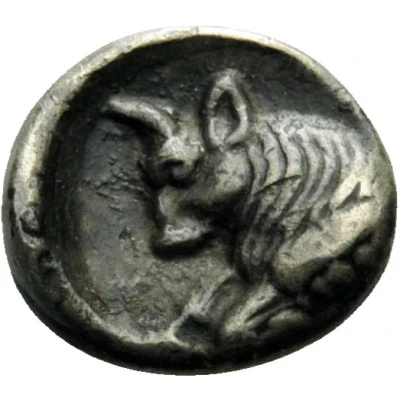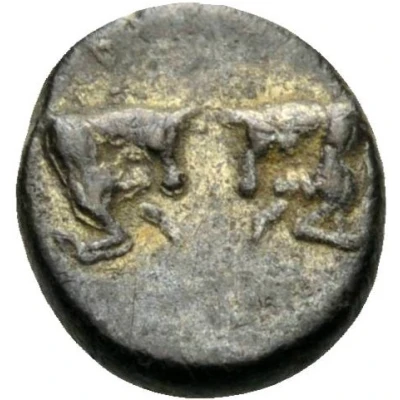


© jh.simonetto (CC BY-NC)
Hemiobol 450 BC - 400 BC
| - | 0.29 g | 7 mm |
| Issuer | Uncertain Carian city |
|---|---|
| Type | Standard circulation coin |
| Years | 450 BC - 400 BC |
| Value | Hemiobol (1⁄12) |
| Currency | Drachm |
| Weight | 0.29 g |
| Diameter | 7 mm |
| Shape | Round (irregular) |
| Technique | Hammered |
| Orientation | Coin alignment ↑↓ |
| Demonetized | Yes |
| Updated | 2024-10-09 |
| Numista | N#367591 |
|---|---|
| Rarity index | 97% |
Reverse
Head of bull left; behind neck truncation z or symbol, all within round incuse.
Interesting fact
The Hemiobol coin was used in ancient Greece and was equivalent to half an obol, which was the standard unit of currency at the time. The Hemiobol coin was made of electrum, a naturally occurring alloy of gold and silver, and was valued for its durability and portability. Despite its small size, the Hemiobol coin played a significant role in the ancient Greek economy, as it was widely used for everyday transactions and was often used as change for larger denominations.



